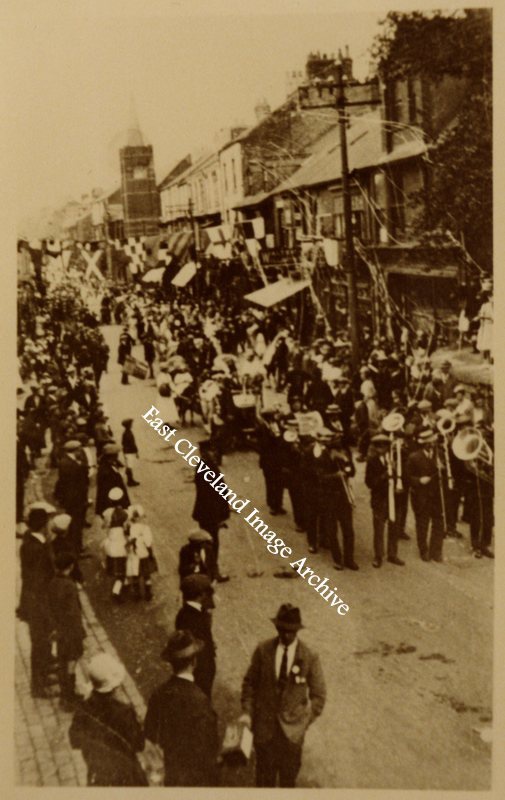
This George Skilbeck postcard view of the Peace Celebrations in 1918, shows the parade has advanced onto Zetland Road.
Image courtesy of The Pem Holliday Collection.
|
|
||
 This George Skilbeck postcard view of the Peace Celebrations in 1918, shows the parade has advanced onto Zetland Road. Image courtesy of The Pem Holliday Collection. 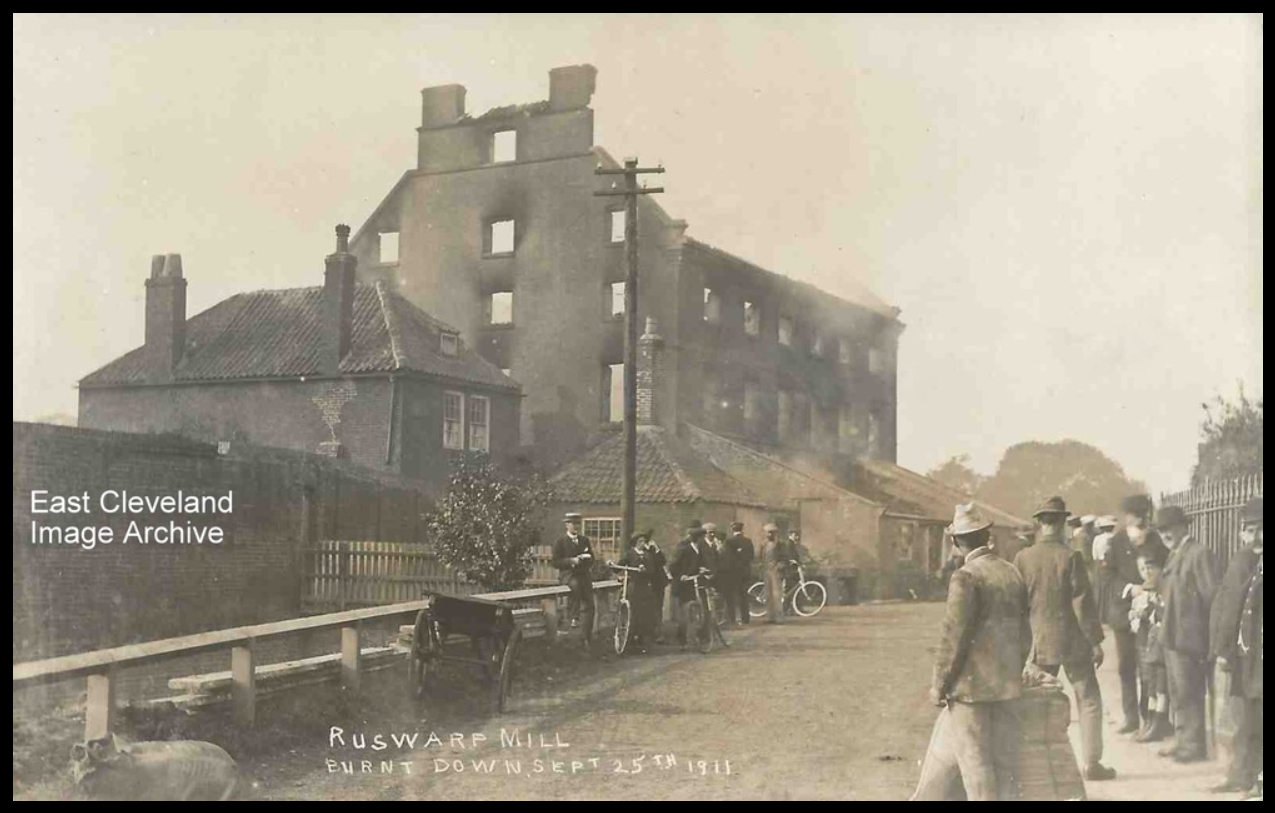 A fire occurred on the 25th September 1911 at Ruswarp Flour, this image is from a series taken by John Thomas Ross an active photographer and postcard producer from Whitby; he apparently cycled to Ruswarp upon notification of the event. 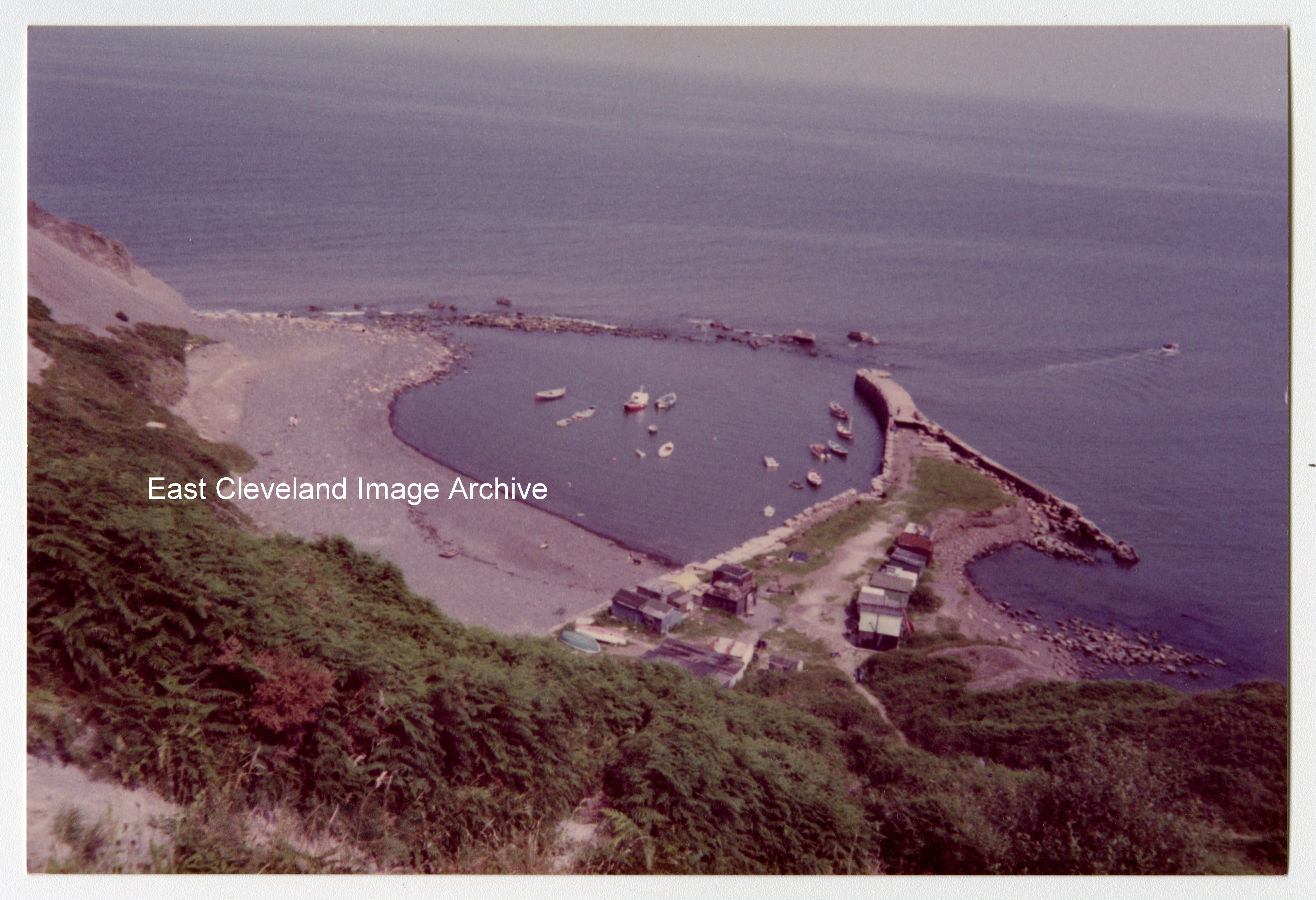 Originally a fishing port, the harbour at Port Mulgrave was used as the only feasible transportation point for iron stone quarried from the Grinkle Mine. In use from the late 1870s till 1917; the machinery on the jetty was being dismantled in 1934 when the wooden gantry accidentally caught fire. The Royal Engineers subsequently destroyed the breakwater on the seaward side to prevent German invasion, even less remains that that shown in this 1982 image. Image courtesy of The Pem Holliday Collection.
With trousers rolled up and skirts modestly raised, trippers venture into the briny, but a distinct lack of swimmers is evident in this postcard view of the beach at Redcar. Peter Appleton has pointed out: “If you cover up the bottom half, the rest of the scene is not dissimilar to that created by the film crew for “Atonement”: equipment drawn up at the head of the beach and lines of people leading down to the water’s edge.” Image courtesy of Maurice Grayson, thanks to Peter Appleton for the update on similarities.
This further image of Red Barnes shows a ward bedecked for Christmas 1916. The patients at these hospitals were generally less seriously wounded than at other hospitals and they needed to coalesce. The servicemen preferred the auxiliary hospitals to military hospitals because they were not so strict, they were less crowded and the surroundings were more homely.
At the outbreak of the First World War the Red Cross secured buildings, equipment and staff to set up temporary hospitals to cope with wounded men returning from the front. Red Barnes at Redcar (former home of intrepid Victorian explorer Gertrude Bell) was another such hospital, the image shows Red Barns orderlies seated bedside empty beds.
At the outbreak of the First World War, the Red Cross secured buildings, equipment and staff to set up temporary hospitals to cope with wounded men returning from the front. The Wharton Hall; at the bottom of Green Road in Skelton was just such a hospital. Provided by the Wharton family of Skelton Castle, this picture shows the Hall in 1915 ready to receive patients. 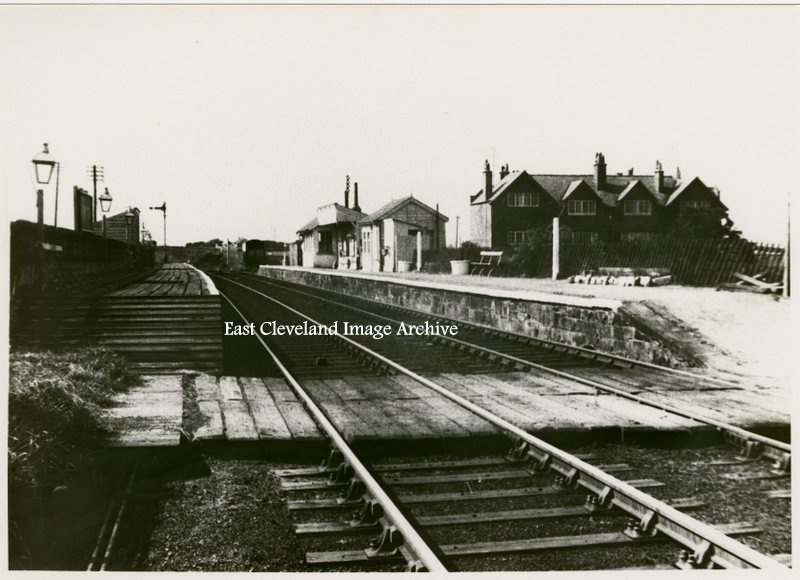 Opening in 1885 as part of the Scarborough & Whitby Railway, the station was originally named Peak; being the highest and most exposed station on the line. The wooden waiting shelter being blown away at one time! Renamed Ravenscar in 1897 and it did not have a station house until 1896. It closed in 1965. Image courtesy of the Pem Holliday Collection, information courtesy of ‘Disused Stations’. 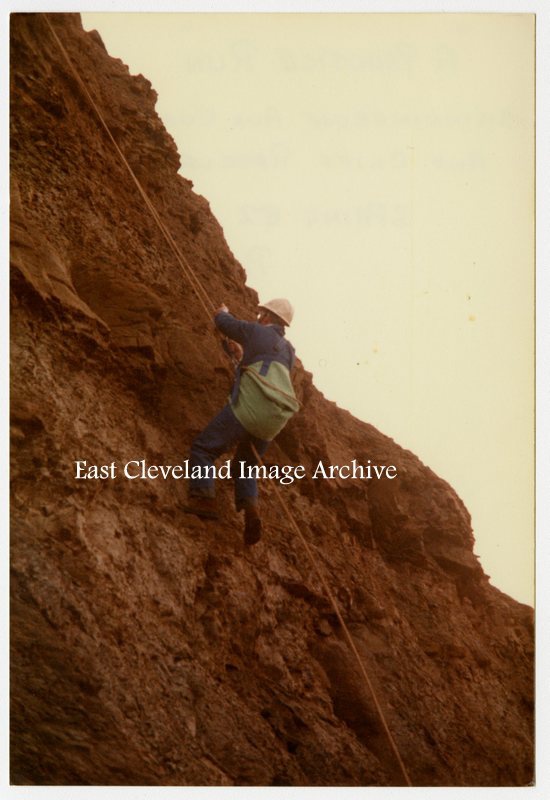 A cliff rescue practice with members of the Skinningrove Auxiliary Coastguard and Cliff Rescue. Do you recognise yourself? Please tell us! Image courtesy of the Pem Holliday Collection. 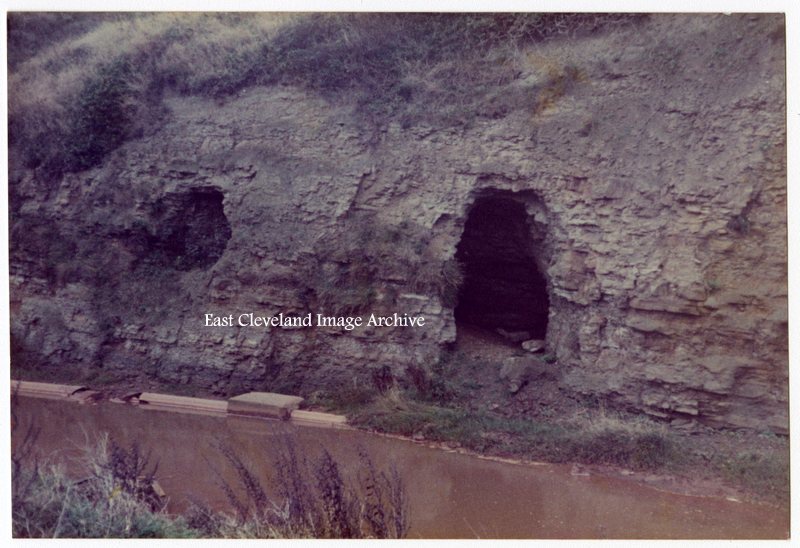 The caves at Skinningrove beside Kilton Beck were used as air raid shelters for the staff and patients of Skinningrove Hospital during the Zepplin raids of World War I. Brian Sawdon confirms this with: “These caves were also used in World War II; my mother took shelter there”. Image courtesy of the Pem Holliday Collection and thanks to Brian Sawdon for the update. |
||
Recent Comments